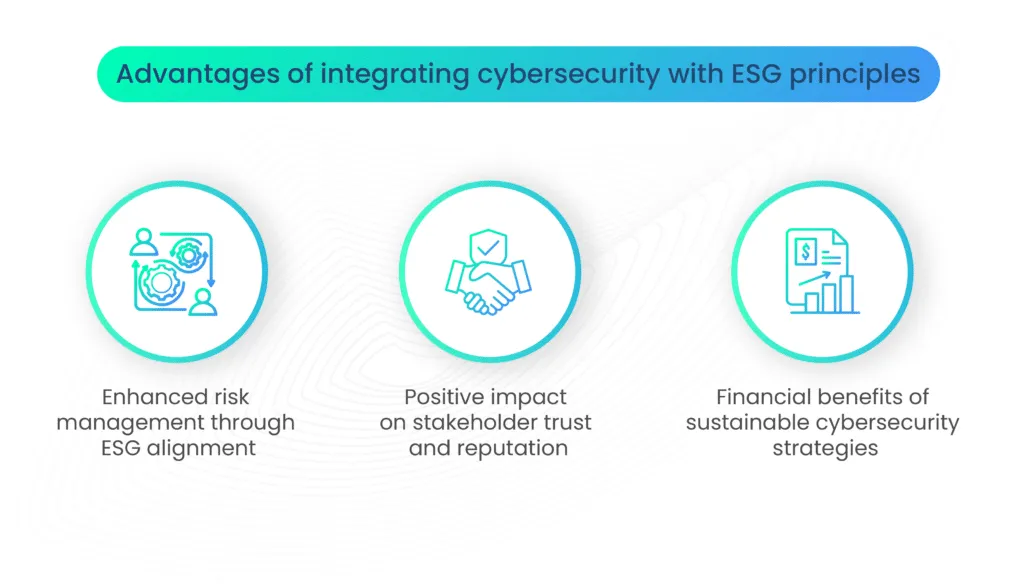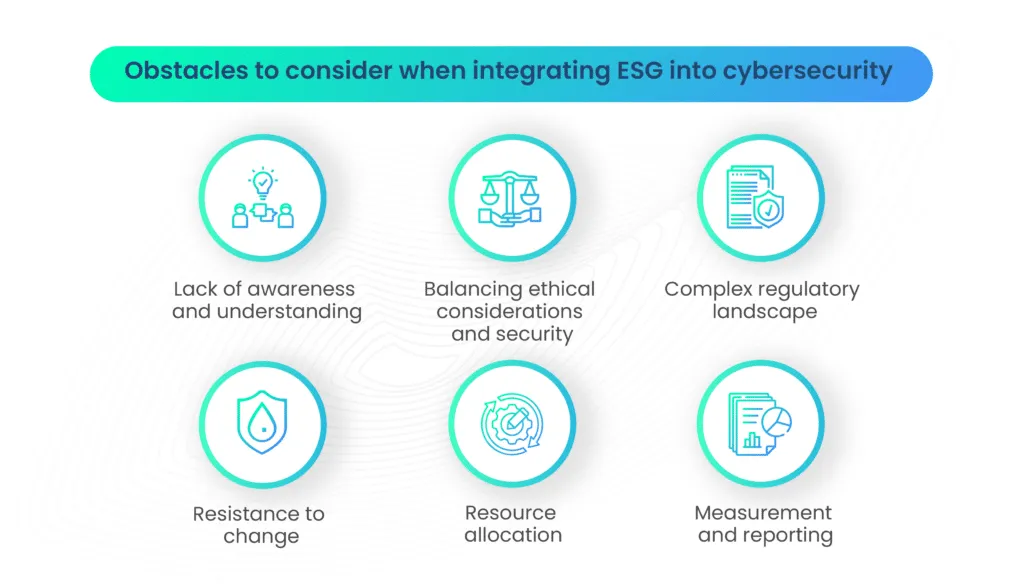Sustainable strategies: Environmental, social, and governance (ESG) risk management

ESG (Environmental, Social, and Governance) factors have gained significant importance in today’s business landscape. They represent a set of criteria used to evaluate a company’s impact on society and the environment, as well as its corporate governance practices. ESG considerations have become integral in assessing a company’s overall sustainability and ethical stance.
In the United States, the SEC is poised to introduce additional ESG regulations for investors, while the forthcoming UK Plastic Packaging Tax is anticipated to have a transformative impact on global supply chains across the globe.
IDC analysts expect that, in 2023, 25% of global organizations will boost their spending on sustainability-related digital technology by over 25% compared to 2022. Within three years, they project that 45% of G2000 organizations will incorporate sustainability into their supply chains, report impact data effectively, reduce waste by 10%, and enhance their competitive edge.
In this scenario, organizations must learn about what ESG and ESG risk management are. This blog will serve as a complete guide for ESG risk management.
What is ESG in cybersecurity?
ESG in cybersecurity refers to the integration of Environmental, Social, and Governance (ESG) principles and considerations into the practices and strategies of cybersecurity within an organization. Here’s what each aspect of ESG represents in the context of cybersecurity:
Environmental (E)
Environmental factors in ESG cybersecurity pertain to the environmental impact of cybersecurity practices. This may include reducing the carbon footprint associated with cybersecurity operations, optimizing energy use in data centers, and ensuring the responsible disposal of electronic waste generated from cybersecurity hardware and equipment.
Social (S)
The social aspect of ESG in cybersecurity focuses on the impact of cybersecurity practices on society and individuals. This includes safeguarding customer data and privacy, ensuring inclusivity and diversity in cybersecurity teams, and protecting against cyber threats that may harm individuals or communities.
Governance (G)
Governance in ESG cybersecurity involves the governance and management of cybersecurity policies and practices within an organization. It includes having robust cybersecurity governance structures, complying with relevant regulations and standards, and ensuring ethical and responsible cybersecurity decision-making at all levels of the organization.
How do ESG principles align with cybersecurity practices?

ESG principles and cybersecurity practices align in promoting responsible, ethical, and sustainable approaches to protecting digital assets and data. Integrating ESG considerations into cybersecurity not only enhances security but also demonstrates a commitment to societal and environmental well-being, which is increasingly important in today’s business landscape.
1. Environmental impact
A. Green computing
ESG encourages organizations to reduce their environmental footprint. In the context of cybersecurity, this can mean optimizing energy-efficient data centers and reducing the environmental impact of hardware and equipment used in cybersecurity operations.
B. Sustainable supply chains
Evaluating and securing the supply chain for cybersecurity tools and technologies is essential. ESG principles can drive organizations to choose suppliers and vendors with strong sustainability practices, reducing the environmental impact of the supply chain.
2. Social responsibility
A. Data Privacy
Protecting customer data and privacy is a fundamental aspect of ESG and cybersecurity. Organizations must implement robust data protection measures to uphold their social responsibility and ethical commitments.
B. Diversity and inclusion
ESG promotes diversity and inclusion. In cybersecurity, having diverse teams can lead to more innovative solutions and better threat detection by considering a wider range of perspectives and experiences.
3. Governance and ethics
A. Cybersecurity governance
ESG governance principles align with strong cybersecurity governance. This involves establishing clear policies, procedures, and accountability mechanisms for cybersecurity within an organization.
B. Compliance
Compliance with cybersecurity regulations and standards is crucial for ESG alignment. Meeting regulatory requirements demonstrates responsible governance in cybersecurity practices.
4. Resilience and ESG risk management
A. Resilience
ESG encourages organizations to assess and mitigate risks. Cybersecurity is a critical aspect of ESG risk management, as cyber threats can have significant financial and reputational impacts.
B. Ethical risk
ESG principles address ethical risks, and cybersecurity must also consider the ethical implications of data handling, including preventing data breaches and misuse.
5. Transparency and reporting
A. Impact reporting
ESG requires organizations to report on their environmental and social impact. Similarly, organizations should transparently report on their cybersecurity practices, including incidents, response measures, and their commitment to data protection.
B. Stakeholder communication
ESG practices often involve engaging with stakeholders. In cybersecurity, this can include communicating with customers, regulators, and shareholders about security measures and breach responses.
Benefits of aligning cybersecurity with ESG

1. Enhanced risk management through ESG alignment
Aligning cybersecurity with ESG principles enhances overall risk management in several ways:
- Identifying emerging risks: ESG factors help organizations identify emerging risks related to data privacy, supply chain resilience, and regulatory compliance. This proactive approach enables better risk assessment and mitigation.
- Comprehensive risk assessment: By incorporating ESG criteria, organizations conduct more comprehensive risk assessments that consider not only traditional cybersecurity threats but also factors like ethical and environmental vulnerabilities.
- Compliance and regulations: ESG alignment ensures compliance with evolving regulations related to cybersecurity, data protection, and sustainability. It promotes a proactive approach to regulatory compliance, reducing legal and financial risks.
2. Positive impact on stakeholder trust and reputation
- Trust and transparency: Embracing ESG principles in cybersecurity practices demonstrates a commitment to ethical and responsible conduct. This fosters trust among customers, investors, and other stakeholders, enhancing an organization’s reputation.
- Stakeholder expectations: Stakeholders increasingly expect companies to address cybersecurity not only as a technical issue but also as an ethical and social responsibility. Meeting these expectations helps maintain stakeholder trust and confidence.
3. Financial benefits of sustainable cybersecurity strategies
- Cost reduction: Sustainable cybersecurity practices often lead to reduced operational costs through more efficient resource utilization and lower incident response expenses.
- Competitive advantage: Organizations that align cybersecurity with ESG principles can gain a competitive edge. They attract investors who prioritize ESG considerations, potentially lowering capital costs and accessing a broader pool of investors.
- Resilience and business continuity: Sustainable cybersecurity measures enhance an organization’s resilience against cyber threats, reducing the financial impact of potential breaches and ensuring business continuity.
Challenges and considerations in implementing ESG in cybersecurity

Integrating Environmental, Social, and Governance (ESG) principles into cybersecurity practices presents organizations with unique challenges and considerations. Here are some of the key challenges and strategies to overcome them:
1. Lack of awareness and understanding:
Challenge: Many organizations may lack awareness and a deep understanding of ESG principles and how they relate to cybersecurity.
Solution: Conduct ESG education and training programs for cybersecurity teams and key stakeholders. Raise awareness about the broader impact of cybersecurity on sustainability and ethical practices.
2. Balancing ethical considerations and security:
Challenge: Striking the right balance between ethical considerations, such as data privacy and social responsibility, and robust cybersecurity practices can be challenging.
Solution: Develop clear policies and guidelines that define ethical boundaries within cybersecurity practices. Create cross-functional teams that include both cybersecurity and ESG experts to make informed decisions.
3. Complex regulatory landscape:
Challenge: Navigating the complex and evolving regulatory landscape related to both cybersecurity and ESG can be daunting.
Solution: Establish a dedicated team responsible for monitoring and ensuring compliance with relevant regulations in both domains. Leverage technology solutions for compliance tracking and reporting.
4. Resistance to change:
Challenge: Resistance to change within an organization can hinder the adoption of new ESG-centric cybersecurity practices.
Solution: Engage in change management efforts, including clear communication of the benefits of ESG integration and involving employees at all levels in the transition. Highlight how sustainable cybersecurity practices can lead to better risk management and stakeholder trust.
5. Resource allocation:
Challenge: Allocating resources for ESG integration in cybersecurity can be challenging, especially for smaller organizations.
Solution: Prioritize ESG initiatives based on their potential impact and significance to the organization. Seek external partnerships or collaborations to leverage resources and expertise.
6. Measurement and reporting:
Challenge: Measuring and reporting the impact of ESG integration in cybersecurity can be complex.
Solution: Implement key performance indicators (KPIs) and key risk indicators (KRIs) that specifically track ESG-related cybersecurity metrics. Utilize reporting ESG risk management frameworks and tools to streamline the measurement and reporting process.
ESG risk management certification
There are several ESG risk management certification programs available for professionals looking to enhance their expertise in this field. These certifications are designed to provide individuals with the knowledge and skills needed to assess and manage ESG risks effectively. Here are some ESG risk management certification options:
- Cambridge Advance Online – ESG Risk Management: The Cambridge Advance Online offers a comprehensive ESG Risk Management course that provides managers from various sectors with an introduction to ESG risk management practices.
- Moody’s Analytics – ESG Risk Assessment Fundamentals Course: Moody’s Analytics offers an ESG Risk Assessment Fundamentals Course that helps professionals recognize how to identify, manage, and minimize ESG risks when performing credit risk assessments.
- The Institute of Risk Management (IRM) – ESG Fundamentals and Risk Quantification: IRM offers a 2-day intensive course called “ESG Fundamentals and Risk Quantification,” which aims to elevate ESG risk management skills, focusing on quantitative methods and modeling ESG factors.
- CRISIL Certified ESG Risk Analyst: CRISIL offers the Certified ESG Risk Analyst program, which covers comprehensive concepts and applications related to Environmental, Social & Governance principles.
- University of Pennsylvania on Coursera – ESG Risks and Opportunities Course: The University of Pennsylvania offers a free online course titled “ESG Risks and Opportunities” on Coursera, providing insights into modern ESG principles and their relevance in today’s markets.
- Global Association of Risk Professionals (GARP) – Sustainability and Climate Risk (SCR) Certificate: GARP offers the Sustainability and Climate Risk (SCR) Certificate, designed for professionals interested in climate risk management and sustainability practices across industries.
Conclusion
In conclusion, integrating ESG principles into cybersecurity is essential in today’s business landscape. It enhances ESG risk management, builds trust, and offers financial benefits. However, challenges like awareness, ethics, regulations, resistance, and resource allocation must be addressed. It’s a fundamental step towards a sustainable, ethical, and resilient future.
Ready to take control of your risk management? Try Scrut today and empower your organization to proactively mitigate risks, ensure compliance, and achieve sustainable success. Get started now!
FAQs
1. What is ESG, and how does it relate to cybersecurity?
ESG stands for Environmental, Social, and Governance. It represents a set of criteria used to evaluate a company’s impact on society, the environment, and its corporate governance practices. In cybersecurity, ESG principles are integrated to ensure ethical, responsible, and sustainable cybersecurity practices.
2. Why is aligning cybersecurity with ESG principles important?
Aligning cybersecurity with ESG principles is crucial for promoting ethical and sustainable practices, enhancing ESG risk management, maintaining stakeholder trust, and meeting regulatory compliance in today’s business landscape.
3. How can organizations reduce their environmental impact in cybersecurity?
Organizations can reduce their environmental impact in cybersecurity by optimizing energy-efficient data centers, responsibly disposing of electronic waste, and evaluating the sustainability of cybersecurity hardware and equipment.


















